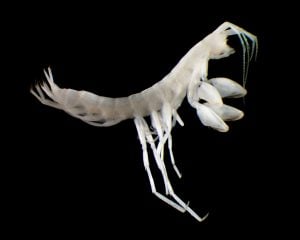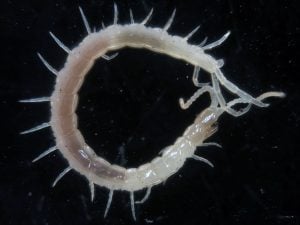Projects
- Taking eDNA underground: Transforming assessment of subterranean ecosystems
- Review of survey and sampling protocols
- Capturing monitoring data: resilience to change
Publications:
Subterranean Fauna: A research program for Western Australia
Research update 2021
Shedding new light on the cryptic world of subterranean fauna
Subterranean environments contain a unique and diverse fauna: either aquatic, living in the groundwater (stygofauna), or air-breathing, living in rock voids above the water table (troglofauna).
The decision by the Western Australian Environmental Protection Agency (EPA) in the mid-1990s to recognise subterranean fauna as a potential factor to be considered in environmental impact assessments highlighted the dearth of information available to make informed decisions.
Since then, research on this group of mainly invertebrates has grown exponentially. However, much of this research has focused on taxonomy, diversity and evolutionary history, and recent reviews have indicated that large knowledge gaps still exist in relation to their basic biology and ecology.

Image: J McRae

Image: J McRae
Subterranean fauna assessment: uncertainty causes delays in decisions
Western Australia has a particularly diverse subterranean fauna, much of which coincides with two areas subject to mining – the Pilbara and Yilgarn. As such, these areas have become the major focus of subterranean fauna assessment.
The high levels of uncertainty in the assessment process have resulted in the precautionary principle taking effect, with consequent delays in proposal decisions, various appeals, and stringent Ministerial conditions on development approvals.
How WABSI is enabling greater certainty through addressing knowledge gaps
In early 2017, the above issues were brought to the attention of the Western Australian Biodiversity Science Institute (WABSI), and a series of workshops were instigated to develop a program of research to close the knowledge gaps.
An initial workshop in May 2017, with attendance by representatives from the resources sector and environmental regulators, identified the critical gaps in knowledge with a clear consensus on five broad focus areas to progress:
- More accurate, efficient and consistent species identification processes to increase taxonomic certainty
- Improved sampling and survey protocols to optimise the efficiency of survey and monitoring
- Improved understanding of habitat requirements to better define distributions
- Improved understanding of resilience to disturbance to inform mitigation strategies
- Data discoverability and accessibility to provide spatial and temporal context
The subterranean fauna research program
The specific objective of the program is to address the focal areas above that were identified by end-users, encourage complementarity and collaboration, rather than duplication of research effort.
The research program is designed to be a collaborative effort with expertise from multiple disciplines contributing.
A strong governance structure has been established, including a steering committee to oversee the program and to ensure end-user expectations are being met.
Overarching objectives of project clusters in this program are to:
- Develop a standardised best practice approach for recognising species boundaries based on multiple criteria
- Refine and test new sampling and survey protocols to ensure contemporary approaches are efficient, repeatable and effective
- Develop, test and apply a generic approach for advanced subterranean fauna assessment based on fine-resolution dynamic three-dimensional habitat characterisation
- Characterise ecosystem function and food webs of subterranean environments
- Determine the response, resilience to and persistence after change in habitat conditions for stygofauna and troglofauna
- Establish laboratory-based subterranean fauna breeding programs for selected species
- Consolidate existing subterranean fauna records and associated habitat attributes in a publicly accessible information system
Want to engage with us?
We seek industry partners that want to invest in leading research that will deliver real world outcomes, increase knowledge and help lift certainty to enable more informed management decisions.
We also invite academic institutions and others to engage with this program.
Email us on subtfauna@wabsi.org.au
Or, if you would like to learn more: Contact us to see how we can help.